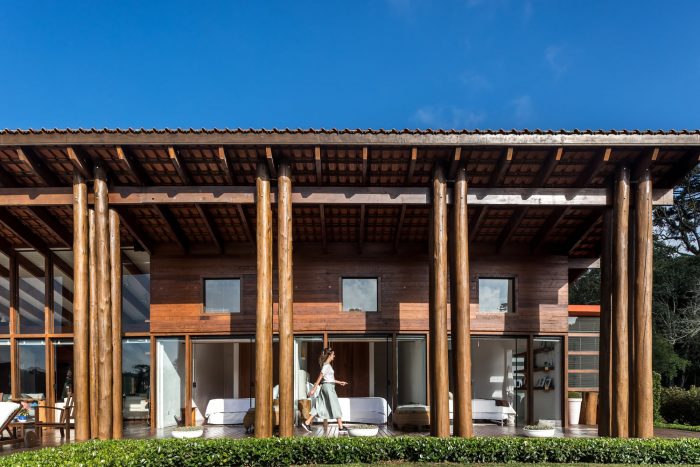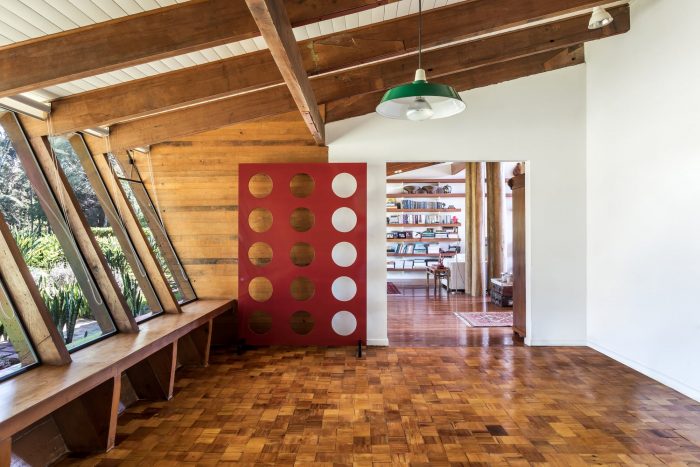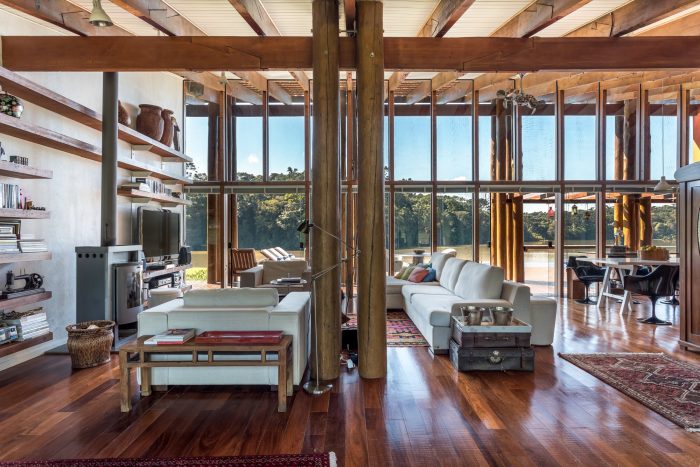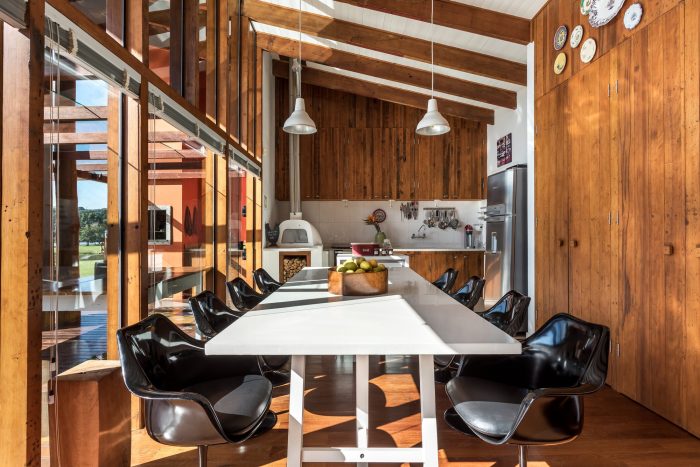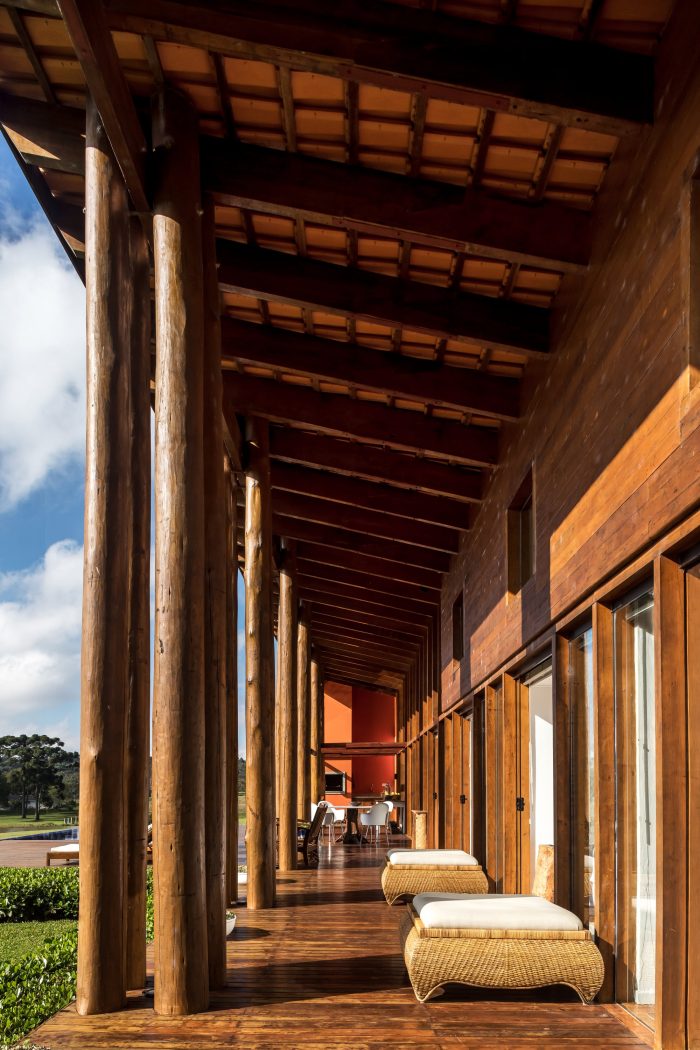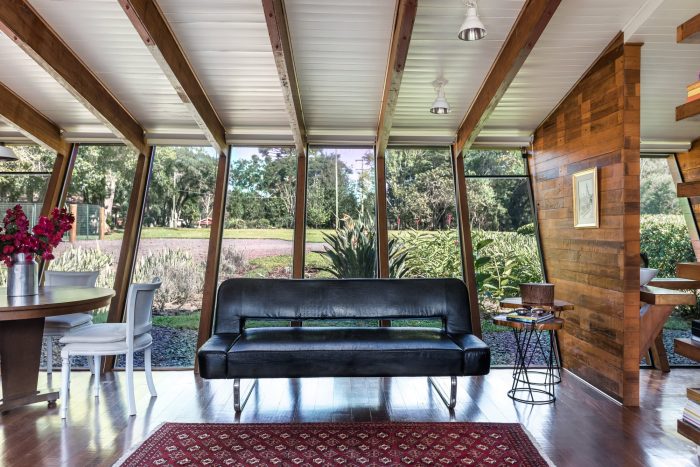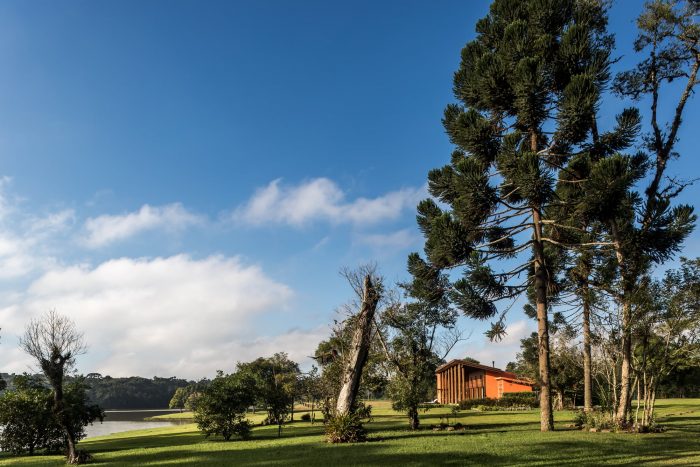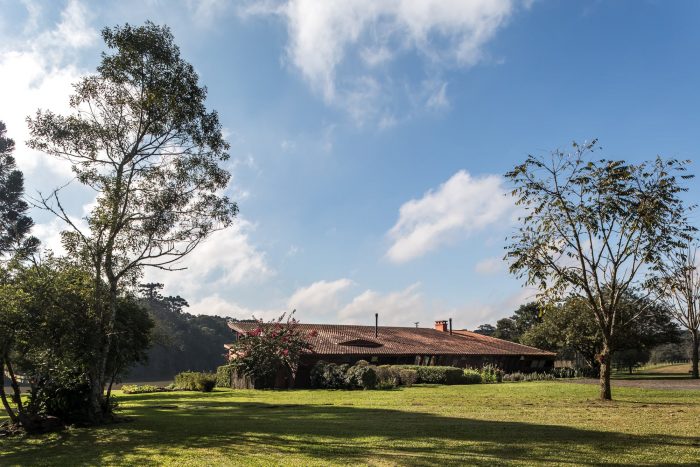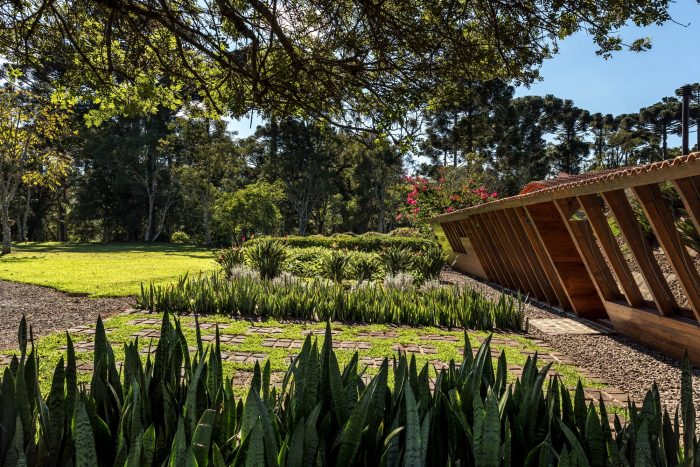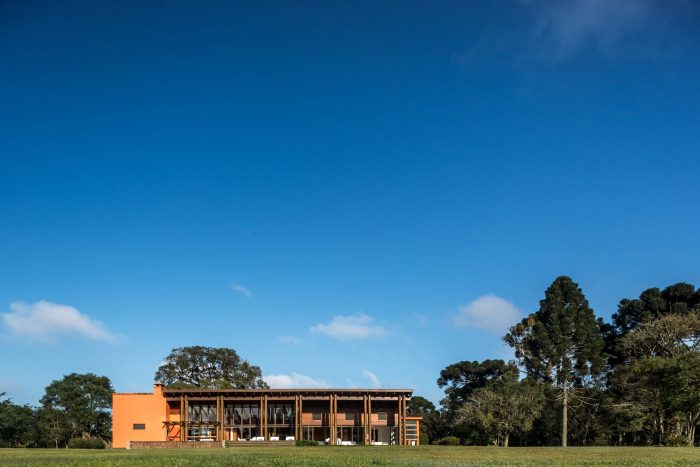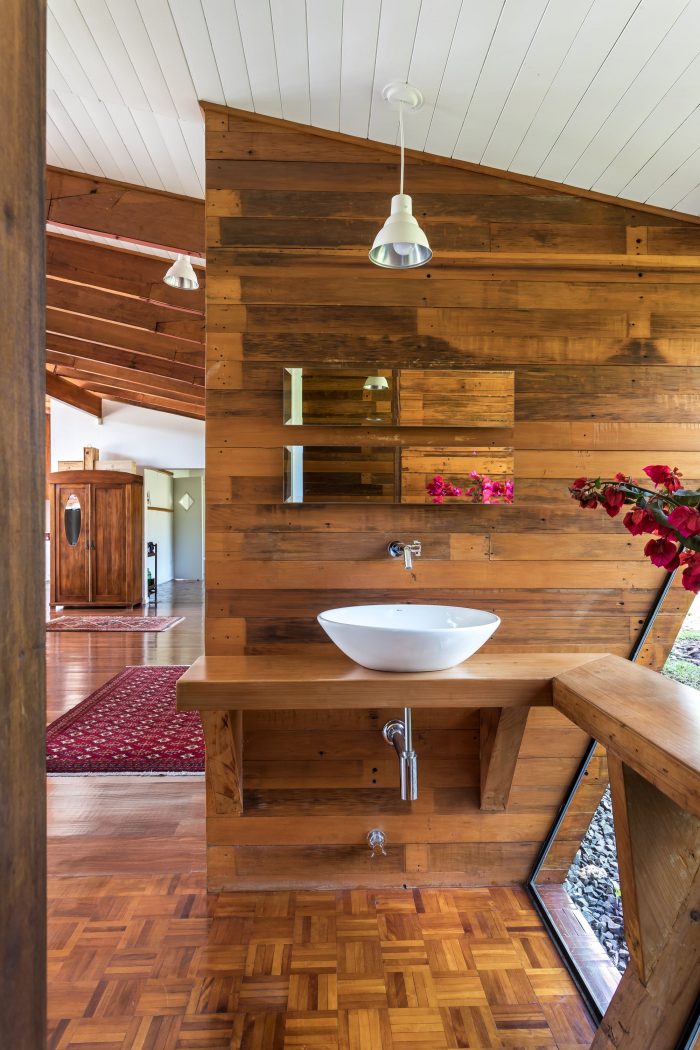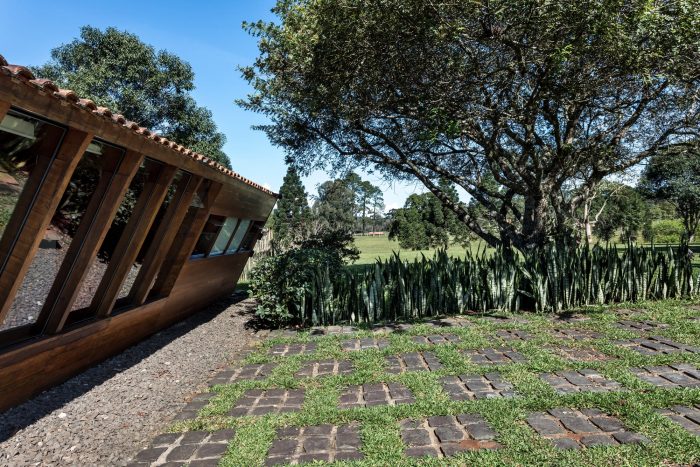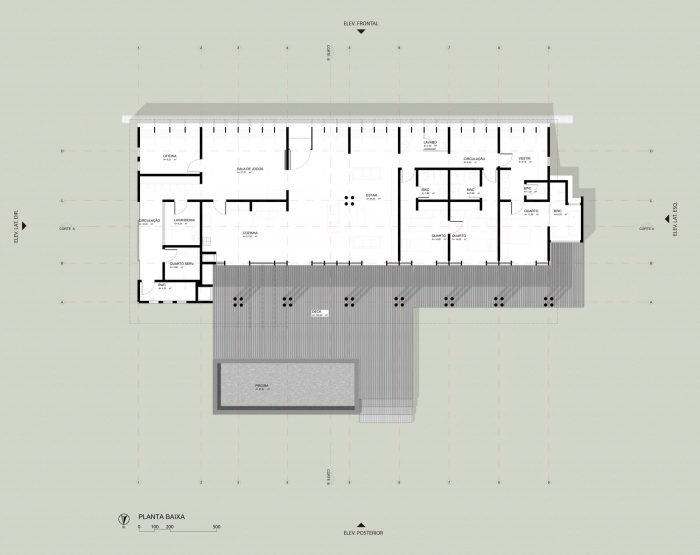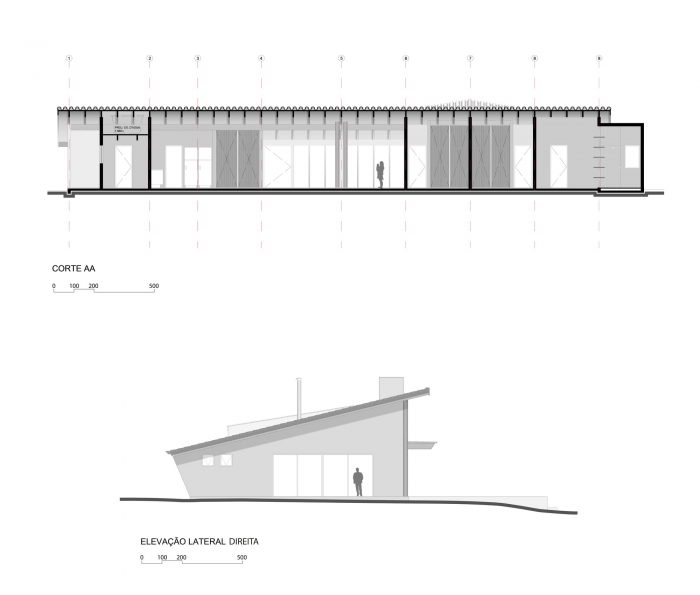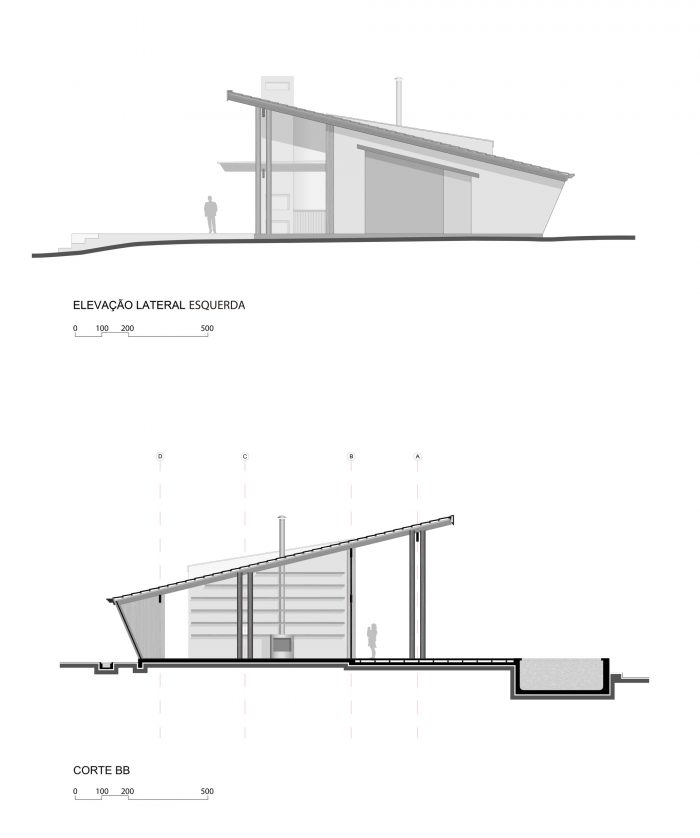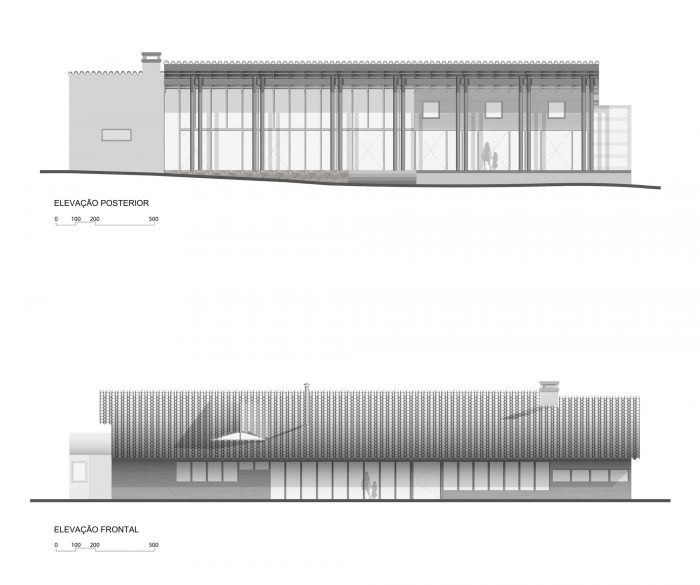我们去Irati参观Chácara do Pinho,这是一对年轻夫妇的住宅项目的地点。然而,我们的第一次会面是在Irati市的中心,在传统的小麦磨坊,客户的家庭的生意。当时他们报告说,他们将拆除地板上的所有松木和磨坊地板上的横梁,以实现生产的现代化,而这些木材,几十年前就是从未来建房的农场开采出来的。
We went to Irati to visit Chácara do Pinho, site of the project for the residence of a young couple. However, our first meeting was in the center of the city of Irati, in the traditional wheat mill, business of the clients’ family. That was when they reported that they would remove all the pine wood from the floors and the beams from the mill floors to modernize production, and that this wood, decades earlier, had been extracted from the farm where the future house would be built.
因此,我们建议使用所有将从工厂移出的木材来建造房屋,这样,离开Chácara do Pinho成为家庭工厂的松树,现在将作为一个家回到它的原产地。这个概念被当场接受。
So we suggested using all the wood that would be removed from the mill to build the house, so that the pine, which left Chácara do Pinho to become the family mill, would now return as a home to its place of origin. The concept was accepted on the spot.
抵达农场后,我们面对的是一片旺盛的风景,一个美丽的湖泊和一片茂密的森林,其中有许多本地的天竺葵树。这是一个有着许多家庭情感记忆的地方,保存得非常好,是分享建筑、记忆、精神和自然的理想场所。
Arriving at the farm we are faced with an exuberant landscape, a beautiful lake and a dense forest with many native Araucaria trees. It is a place of many affective memories of the family and very well preserved, ideal for sharing architecture, memory, spirit and nature in a continuous circle.
这座具有现代主义建筑风格的房子接受了具有重复调制的木梁,创造了运动和框架的宽阔开口,有利于自然光的进入和温度控制。
The house with modernist architecture received wooden beams with repeated modulation, creating movement and framing the wide openings that favor the entry of natural light and temperature control.
建筑学寻求自然和记忆作为合作伙伴来设计这个项目。房间的纵向分布和植物本身在土地范围内的设计考虑到了与森林和湖泊的位置关系,使其成为景观。
Architecture sought nature and memory as partners to design the project. The longitudinal distribution of the rooms and the plant itself within the land area was designed taking into account the position in relation to the forest and the lake that integrates the landscape.
这整个结构的分布是为了优化自然资源。最高的一面接受早晨的阳光,而最低的一面则保护自己免受下午最热的阳光;这些天,只要打开玻璃门,房子立刻就会焕然一新。
工作和景观之间的整合和流畅性创造了一种宽敞、舒适、快乐和和平的感觉。
历史是浸润在自己身上的,所以建筑促进了对这一历史的延续。
This entire structure was distributed in order to optimize natural resources. The highest face receives the morning sun, while the lowest one protects itself against the hottest afternoon sun; these days, just open the glass doors and the house immediately refreshes.
The integration and fluidity between work and landscape creates a feeling of spaciousness, comfort, joy and peace.
History is impregnated in itself and so architecture promotes continuity to that history.
Architects: Canalli Arquitetura
Area : 7535 ft²
Year : 2019
Photographs :Eduardo Macarios
Lead Architects : Fernando Canalli, Natalia Canalli
Country : Brazil


